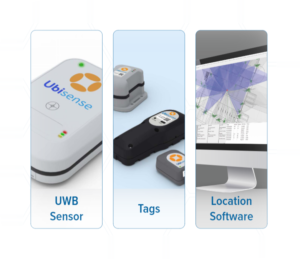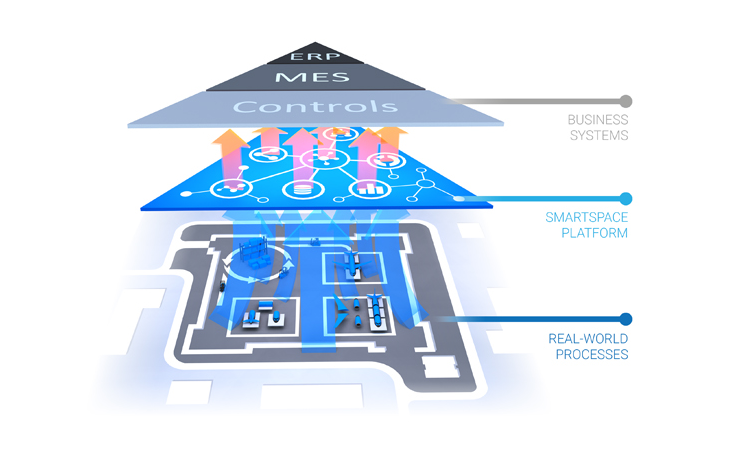Hypothetically, an organization could implement real-time asset tracking across all its operations. An ideal asset tracking solution would therefore track all assets, in all processes, and at all times, and the data would be used to manage, monitor, and optimize the utilization of those assets.
However, there are challenges associated with implementing asset tracking solutions, including management buy-in, the cost of installing & maintaining infrastructure, the organization’s asset tracking maturity, integrating data into existing systems, and training people to use the data effectively.
CXO Buy-In
The first step in implementing a tracking solution is to gain executive buy-in. Ideally, a CXO to sponsor the project. A C-Level sponsor is essential for two reasons.
First, the investment required to implement a tracking solution will likely require management or even board-level approval.
Second, successful asset tracking solutions will result in changes (improvements) to existing processes, and the support of executive leadership will be critical to getting buy-in from front-line employees.
Enlist Participation from Across the Organization
Asset tracking is not implemented in a silo. It will likely require changes to existing processes, affecting front-line employees. As such, it is vital to enlist participation from across the organization when planning for asset tracking.
Define the Goals of the Implementation
Real-time asset tracking is rarely a one size fits all solution. Organizations should tailor the implementation to meet their specific needs. Before starting the implementation, it is essential to define the goals and objectives of the project. Here are some questions you should answer.
What are you trying to achieve? What problems are you trying to solve? What data do you need to collect?
Answering these questions will help scope the project, identify the right solution, and build a business case for the investment.
Organizations should also identify the objectives of the implementation. Some broad objectives for asset tracking implementations include.
- Reducing downtime
- Streamlining maintenance
- Increasing overall equipment efficiency (OEE)
- Monitoring utilization
- Improving quality and reducing errors
After top-level objectives have been identified, specific goals should be delineated. Examples of some specific goals are.
- Reduce the time it takes to find and retrieve assets
- Improving customer service by reducing the time it takes to fulfill customer orders
- Optimizing workflows by reducing the time it takes to move assets from one location to another
- Improving asset utilization by reducing the time assets spend idle
- Lowering the cost of inventory by reducing the need for excess inventory
- Meeting delivery schedules by avoiding lost or forgotten work-in-progress (WIP)
Specific goals will help to focus the implementation.
Asset tracking is not an all-or-nothing proposition and can be implemented in phases.
Organizations with low asset tracking maturity can start with a basic tracking of high-value assets. As organizations become comfortable with the technology and data, they can expand the implementation to include more assets and advanced features.
Choose the Right Technology
There are many different technologies available for asset tracking, and the right solution depends on the specific needs of the implementation. The sensors and software are two primary components of real-time asset tracking solutions.

Sensors
There are many factors to consider when choosing sensors, including location technology, scalability, precision, reliability, battery life, size, the environment in which the sensors will be used, the type of assets being tracked, the specific needs of the application, and the cost.
Software
The software is the brain of asset tracking solutions. Therefore, choosing a flexible, scalable, and customizable software platform is essential. The platform should also be able to integrate with existing systems and data sources.
Some factors to consider when choosing asset tracking software include ease of use, flexibility, scalability, integration capabilities, security, and data management.
Plan for Scalability
While an organization may initially choose to track a specific process or asset, eventually, the focus broadens to track other processes, assets, or even people.
Multiple vendors with disparate system setups can cause interference between systems and bring additional costs and overheads. Rather than buying two separate systems, the initial investment in a multi-application platform will allow, for example, a factory to add a digital twin to its existing assembly line tracking.
For long-term planning, selecting a system that can add applications as needed is advisable to save time and cost.
Plan for Dependencies and Integrations

Asset tracking depends on, and needs to integrate with, existing systems to be effective.
For example, a real-time asset tracking solution may depend on the organization’s network infrastructure. Organizations should plan for other dependencies, including data, workflows, and processes.
Real-time asset tracking becomes even more powerful when integrated with existing systems like ERP and MES. Enabling existing computer systems to sense what is happening with assets in the real-world can increase the value exponentially. If an organization would benefit from such integrations, they should select a software platform that offers proven integrations.
It is essential to plan for dependencies and integrations from the start. Organizations can avoid potential roadblocks and ensure a smooth implementation by looking at the big picture.
Training
Training for asset tracking solutions normally comes in two parts. Training for setting up the initial system and training users to get value from the location data.
Training for initial system set-up can be valuable if the tracking technology is simple – project teams may be able to use almost plug-and-play systems with minimal online training or guidance.
For more robust, sophisticated tracking systems, set-up is normally provided as part of the service from the system vendor, with training focused more on users and their ability to configure and get value from the software.
Data Quality and Security
Data quality and security are essential for any tracking solution. The data collected by asset tracking sensors must be accurate and match the physical world. Organizations should consider factors like sensor accuracy, precision, calibration, and data filtering to ensure data quality.
Regarding security, organizations must consider who will access the data collected by asset tracking and how that data will be used. Organizations should consider features like user permissions, data encryption, and data backups to safeguard data.
Measure Your Investment
A real-time asset tracking initiative can’t be treated as another IT project. Nor can it be treated like an organization-level initiative, such as upgrading a network or implementing a new ERP system.
A vital part of RTLS is continuous improvements toward better asset utilization and efficiencies.
Traditional ROI calculation methods overstate early-stage costs and devalue long-term strategic investments.
Therefore traditional ROI calculation methods don’t work well for flexible and growth-scalable solutions like real-time asset tracking. Depending on the use case, some metrics to measure include.
- Inventory holding cost reduction
- Labor productivity increase
- Machine downtime reduction
- Overall Equipment Effectiveness (OEE)
- Throughput increase
- Forecasting accuracy improvement
- Cost of quality improvement
The best way to determine your specific real-time asset tracking solution’s quantitative and qualitative value is to work with industry experts like Ubisense.
Ubisense can help provide insights into asset tracking technologies and how organizations with challenges similar to yours are deploying asset tracking and measuring the performance of the deployment.
Continuous Improvement
No real-time asset tracking system is implemented perfectly first time and should be continuously improved.
Asset tracking is improved by tracking more assets, increasing the coverage area, integrating with additional systems, and improving data quality. The way data is consumed and analyzed should of course also be continuously improved.
Over time, as the RTLS system is refined, organizations will see increased benefits and ROI.
Organizations should periodically review their real-time asset tracking solution to ensure it is still meeting their needs and will continue to do so in the future as situations change.
Real-time asset tracking is a complex process that requires planning from the beginning. Awareness of the bigger picture is crucial for a smooth rollout and success of real-time asset tracking systems.
Ubisense is the industry leader in helping organizations with real-time asset tracking needs. Our team can help you determine the right real-time asset tracking solution for your organization.
Request a demo today to get started.
